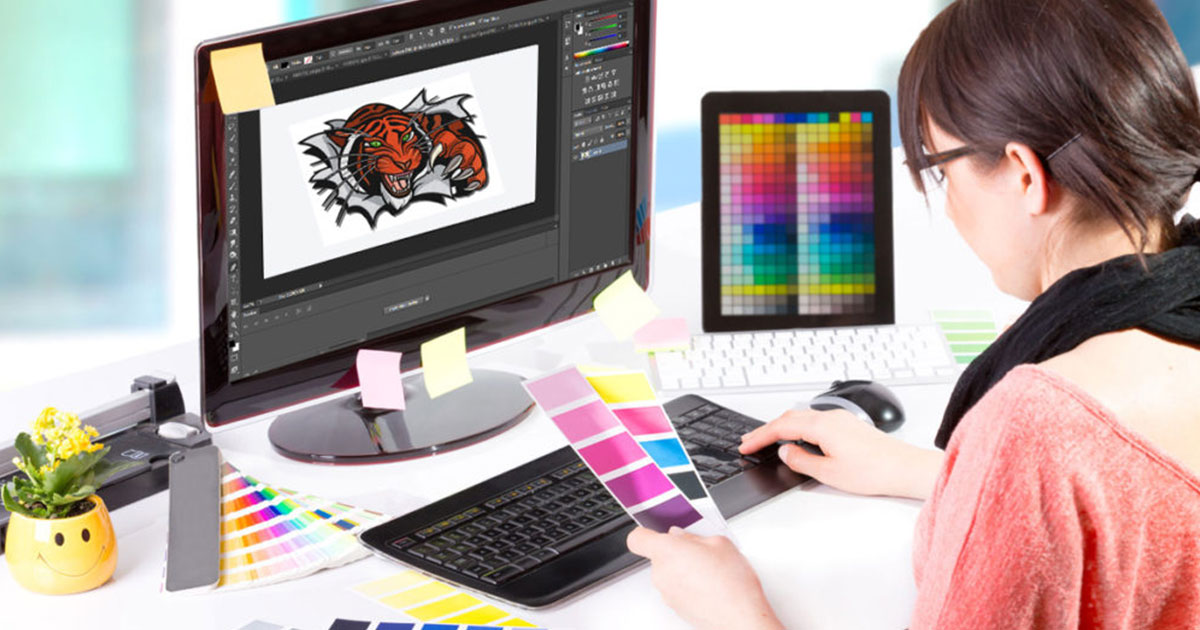Professional Digitizing for Embroidery: High-Quality Layouts
Professional Digitizing for Embroidery: High-Quality Layouts
Blog Article
Mastering the Embroidery Digitizing Refine: Your Ultimate Overview
Needlework digitizing is a thorough craft that calls for accuracy and knowledge to equate detailed layouts right into electronic styles for maker embroidery. As artisans get started on this trip to master the needlework digitizing process, an extensive understanding of the basics establishes the structure for quality.

Understanding Embroidery Digitizing Basics
Needlework digitizing fundamentals develop the structure whereupon detailed layouts are equated right into machine-readable formats for accurate sewing. This preliminary step in the embroidery digitizing process is essential for making sure that the last embroidered item is a faithful representation of the original design. Comprehending needlework digitizing essentials involves grasping essential concepts such as stitch types, stitch instructions, density, underlay, and pull payment.
Stitch kinds play an essential duty in identifying the visual and textural end result of the embroidered design. By selecting the ideal stitch kind, whether it be satin, fill, or running stitch, digitizers can attain the wanted result and improve the overall quality of the embroidery. Additionally, sew instructions influences the circulation and dimension of the style, while density figures out the spacing and insurance coverage of the stitches.
In addition, rug sewing gives security to the style by protecting the material and protecting against distortion throughout the embroidery process. Draw settlement is another essential consideration to neutralize the all-natural propensity of material to agreement when stitched. Mastering these embroidery digitizing basics is essential for producing professional-quality embroidered products.
Picking the Right Digitizing Software Program
Selecting the suitable digitizing software is a vital decision that substantially influences the effectiveness and top quality of the embroidery digitizing process. Digitizing for Embroidery. When picking the right digitizing software, it is necessary to take into consideration factors such as the complexity of layouts you prepare to create, the user-friendliness of the software application, the level of customer support supplied, and the compatibility with your needlework machine
There are various digitizing software choices available in the market, varying from standard programs for newbies to advanced software for expert digitizers. Some preferred choices consist of Wilcom EmbroideryStudio, Hatch Needlework Software, and PulseID. These software use a broad range of devices and features to assist you develop elaborate styles effortlessly.
Prior to making a choice, it is advisable to check out the various software options via complimentary tests or demos to establish which one best matches your requirements. Additionally, reading evaluations and looking for referrals from experienced digitizers can supply valuable understandings right into the toughness and weak points of each software (Digitizing for Embroidery). By carefully assessing your needs and comparing the attributes of various digitizing software program, you can make an Homepage informed option that enhances your needlework digitizing operations
Digitizing Devices and Techniques

Optimizing Design Settings for Needlework
Understanding the ins and outs of layout settings is fundamental in achieving optimal results in the embroidery digitizing procedure, building upon the structure laid by recognizing digitizing devices and strategies. When enhancing style setups for embroidery, it is vital to consider factors such as stitch type, density, underlay, draw payment, and registration. Registration setups line up various elements of the layout precisely, preserving overall design stability.

Troubleshooting Common Digitizing Issues
When encountering usual digitizing issues during the embroidery process, it is necessary to comprehend the source and execute effective solutions without delay. One usual issue is stitch density issues, where stitches might be as well thick, triggering the textile to tighten, or as well sparse, resulting in gaps in the layout. Readjusting the stitch density settings in the digitizing software can aid solve this problem.
Another see page constant obstacle is string breaks during the embroidery procedure. This can occur as a result of numerous factors such as wrong stress setups, boring needles, or using low-quality string. Making certain proper upkeep of the embroidery machine, consisting of routine needle changes and stress adjustments, can reduce the incident of string breaks.
Furthermore, style registration errors can lead to misaligned components within the needlework layout. Examining the design alignment in the digitizing software and making required modifications before stitching can assist in avoiding this problem. By attending to these usual digitizing issues without delay and efficiently, you can guarantee a smoother needlework procedure and high-quality completed products.
Verdict
Finally, mastering the needlework digitizing process needs a solid understanding of the basics, the best choice of software, and knowledge of tools and strategies. Optimizing layout setups and fixing typical digitizing problems are important steps in ensuring high-quality needlework outcomes. By complying with these actions diligently, one can accomplish precision and efficiency in the digitizing procedure.
Report this page